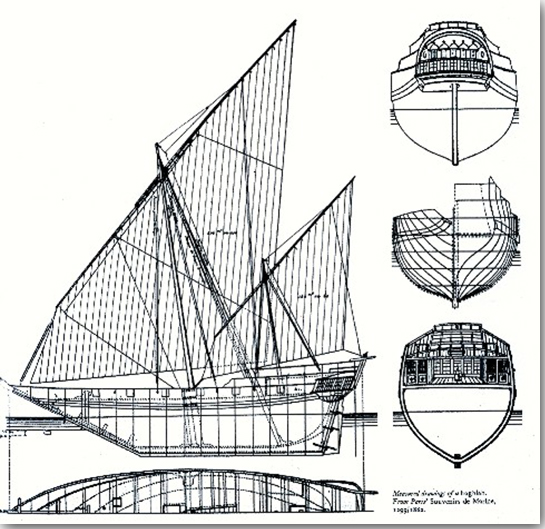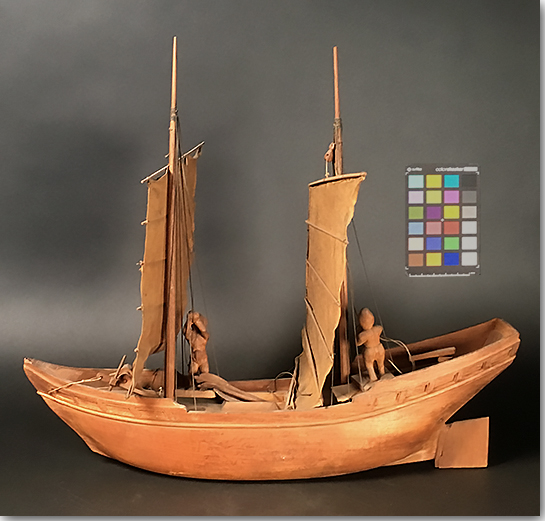The Baghlah Kattoo Analysis by Dylan Prentiss

Museum drawing of a baghlah. (Illustration taken from Paris' Souvenirs de Marine, 1882).
The dhow was used as a trading vessel in the Indian Ocean, transporting goods and people from a variety of ports across the ocean basin to their destinations. This vessel was one of a class of ships that sailed from the Classical era to the modern day, but this specific vessel was created after the Europeans began their direct trade with the Indian subcontinent, circa 1600. The square European style stern shows the European influence and highlights the flexibility of this type of vessel. Specifically, this type of vessel is a subset of dhows called the baghlah, a name showing the Arabic influence on the trading system.

Model of the Kattoo (Photo by Dylan Prentiss)
This specific baghlah is the Kattoo, named after a type of tree that grows in the central region of Sri Lanka, one of the most prosperous trading regions in the Indian Ocean at the time of this ships voyages. The detail on the rigging shows how the vessel was equipped to maneuver in the changing winds of the Indian ocean, as the slightly angled sails could sail both against and with the wind. The structure of the vessel suggests that it contained a large hold for the transportation of goods or people long distances. The most likely goods that the Kattoo would have carried includes spices from the Indonesian archipelago, food and timber from the Indian subcontinent, and people from all around the Indian ocean region.

Model of the Kattoo, stern view (Photo by Dylan Prentiss)
The history of trading in the Indian ocean starts in the ancient era, with the Indus River valley civilization being the first to make the foray to trade with other civilizations across the waves. During the classical era, the Indian Ocean was the hub of traders from Rome to China, trading spices, furs, minerals, and gems from across the world. During the rise of Islam, traders from Arabia became the dominant group of sailors in the Indian ocean, with most of the merchant ventures being launched out Islamic areas. The one exception to this was the mercantile kingdom of Ceylon, modern day Sri Lanka, where the Kattoo received its name, home to multiple ports filled with goods from various locals.
Previous Next







